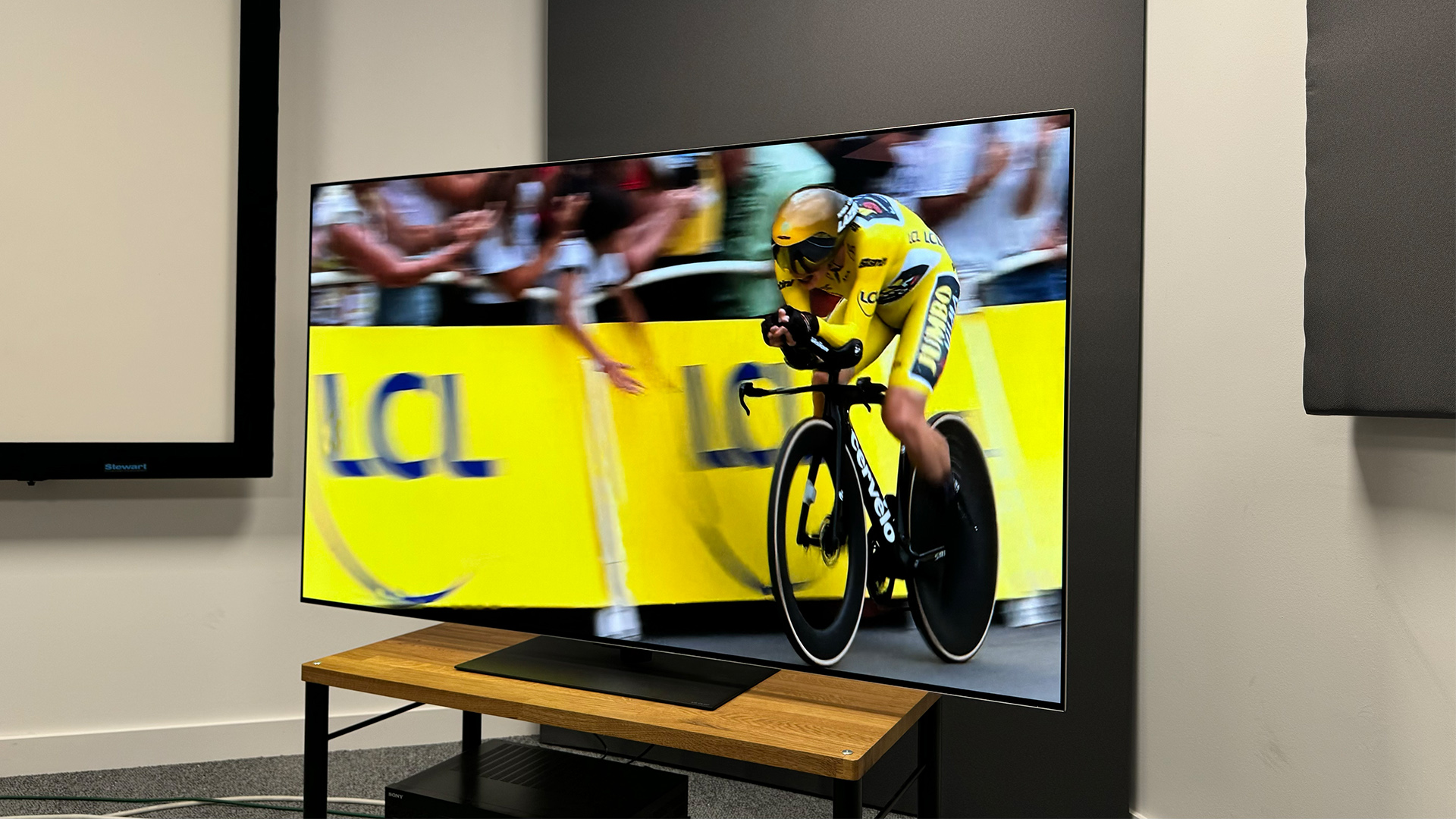What Hi-Fi? Verdict
The LG G4 is one of the best OLED TVs to arrive this year offering brilliant picture quality and general improvements across the board
Pros
- +
Brilliantly bright picture that’s full of contrast
- +
Stellar gaming features
- +
Accurate motion handling
Cons
- -
Thin audio that’s prone to sibilance
Why you can trust What Hi-Fi?
The LG G4 is the latest flagship OLED that’s being directly pitched to cinephiles as the best TV for serious movie watching.
It’s also the second-generation flagship OLED from LG to feature the firm’s brightness-boosting Micro Lens Array (MLA) screen technology – which debuted on last year’s LG G3. The tech did come with some first-generation teething pains, but overall impressed us so much that we gave MLA a What Hi-Fi? Innovation Award last year.
This LG has a tough task, especially given the strong competition it’s facing from the likes of the Samsung S95D, to which we awarded a full five stars earlier this year.
Thankfully, having put it through its paces in our dedicated test rooms, we can confirm the G4 is a very strong contender, and like its step down sibling, the LG C4, is a much bigger step forward on last year’s model than its specifications suggest.
If you want a cutting-edge flagship OLED for serious movie watching, this is one to consider.
Price
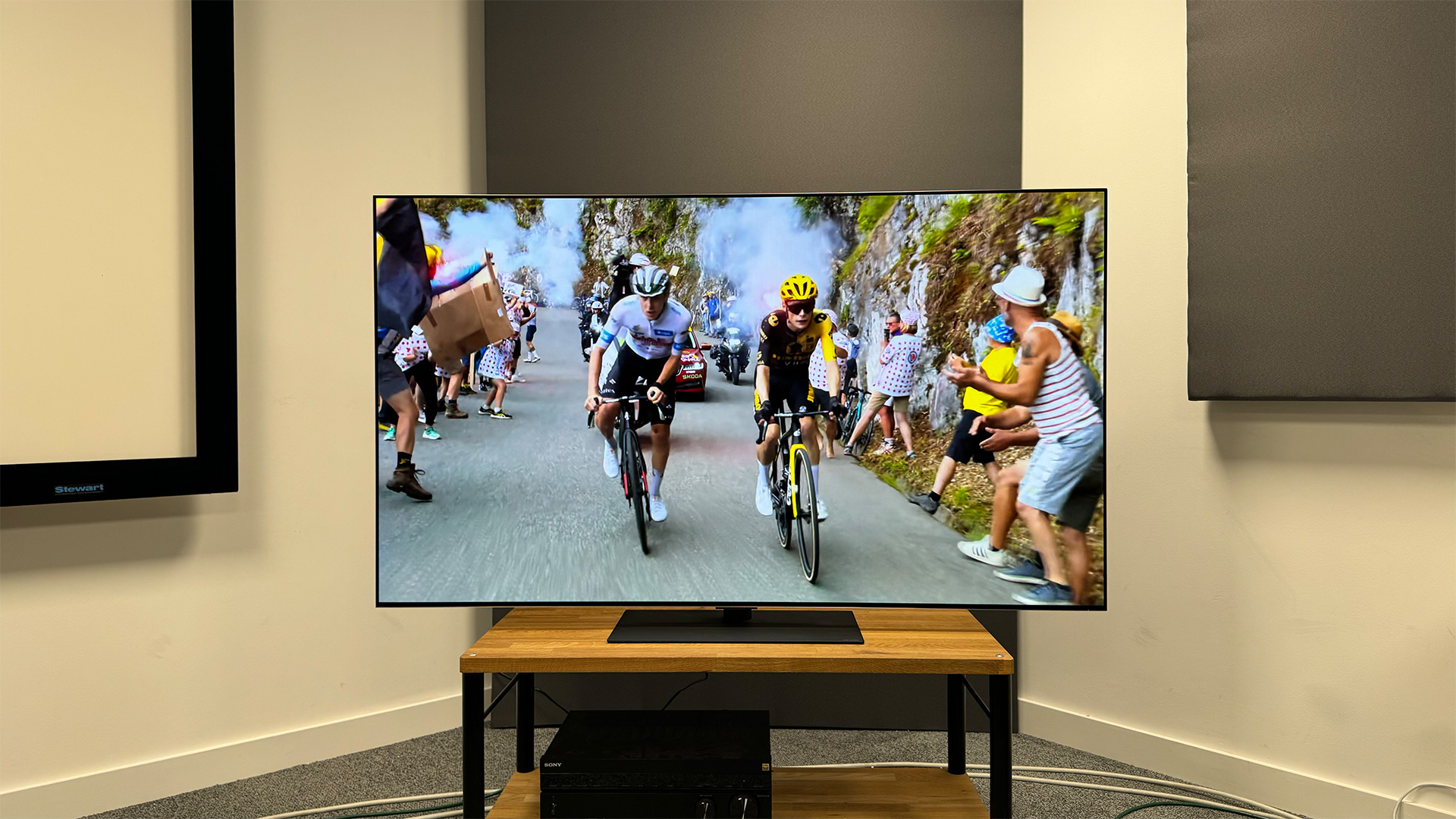
The LG G4 is available in 55-, 65-, 77-, 83- and 97-inch sizes. You can get the smallest 55-inch model for £2400 / $2299 / AU$4199. The 65-inch version we’re reviewing retails for a heftier £3299 / $3299 / AU$5299.
Above them the 77-inch version carries a £4499 / $4599 / AU$7999 price tag. The larger 83-inch retails for £5999 / $6299 / AU$9999 and the largest 97-inch G4 will cost you £24,999 / $24,999 / AU$TBC.
To put that in context, you can also currently pick up a 55-inch Samsung S95D for a slightly more premium £2499 / $2600 / AU3295 or a 55-inch Sony A95L, which was last year’s best premium OLED, for £2299 / $2798.
The only real kicker when it comes to price is that, with the G4 now available, pricing for the outgoing G3 has plummeted. Stocks are rapidly drying up, but you can currently pick up a 55-inch LG G3 for £1699 / $1897 / AU$3130, which is a huge discount on its £2600 / $2500 / AU$4195 launch price.
Being fair to LG, this happens every year and is the main reason why we recommend waiting a few months before buying a new OLED. Prices, even for flagship OLED TVs, tend to start dropping fairly quickly, so if you’re patient you can often get a great deal only a few months after they launch.
Design
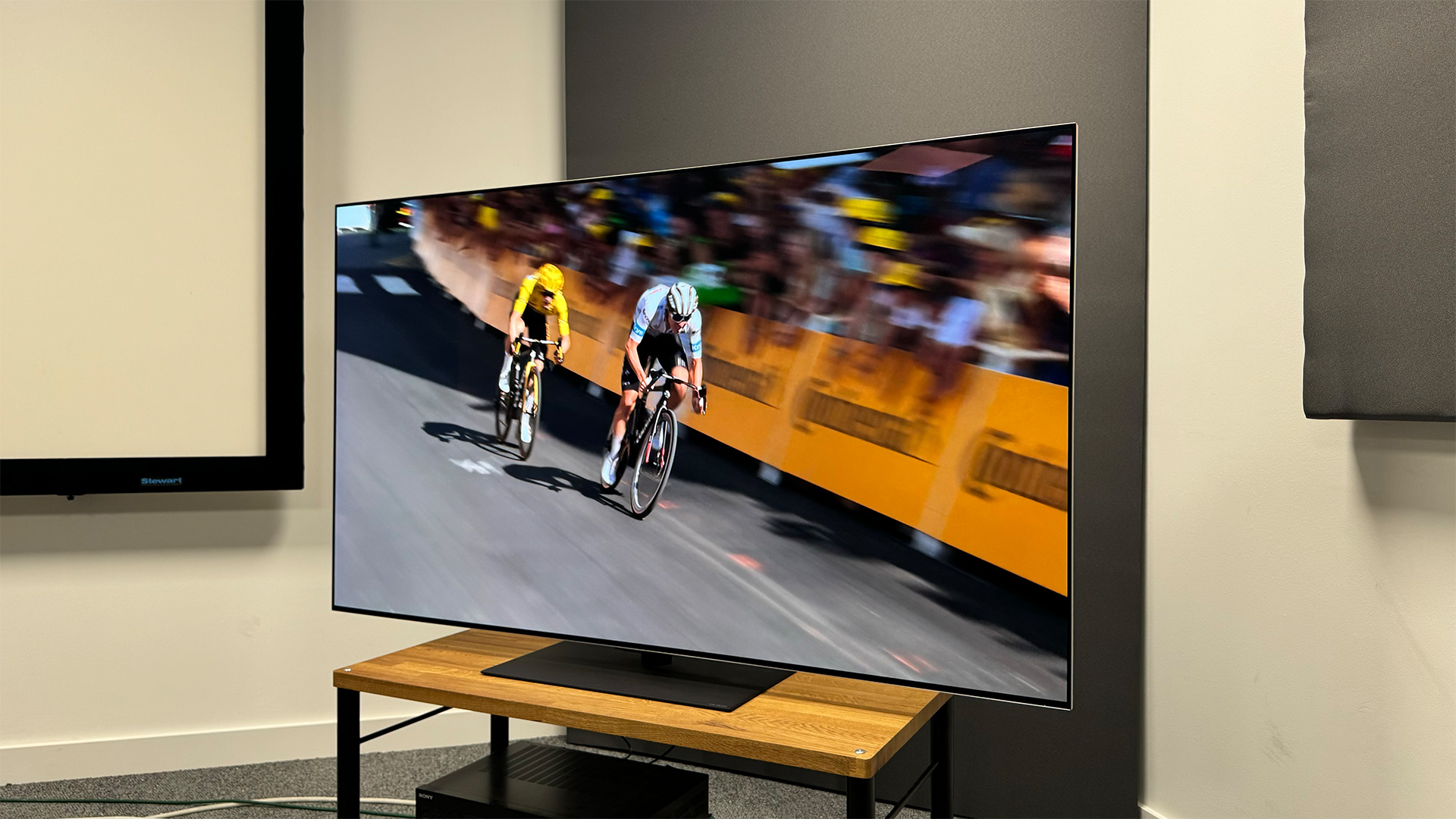
Unboxing the G4 we find it is all but identical to the G3, which itself was pretty similar to the G2. It has the same flat back, though with a step around the edges, and a universal thickness of between 2.4cm and 2.8cm depending on which sized model you buy.
If you were hoping for a completely reworked design then you are out of luck, but LG has made one important change. Specifically, for the 55-inch and 65-inch G4 you now have the choice of a pedestal stand or wall mount, whereas all versions of previous G-series models all came with just a wall mount. For our specific review unit, the OLED65G46LS, a stand is provided, while the OLED65G45LW variant comes with the same Zero Gap mount that was included with the G3. Official pricing is the same whether you go for a stand or wall mount as well, though slight gaps might appear over time based on specific retailer discounts.
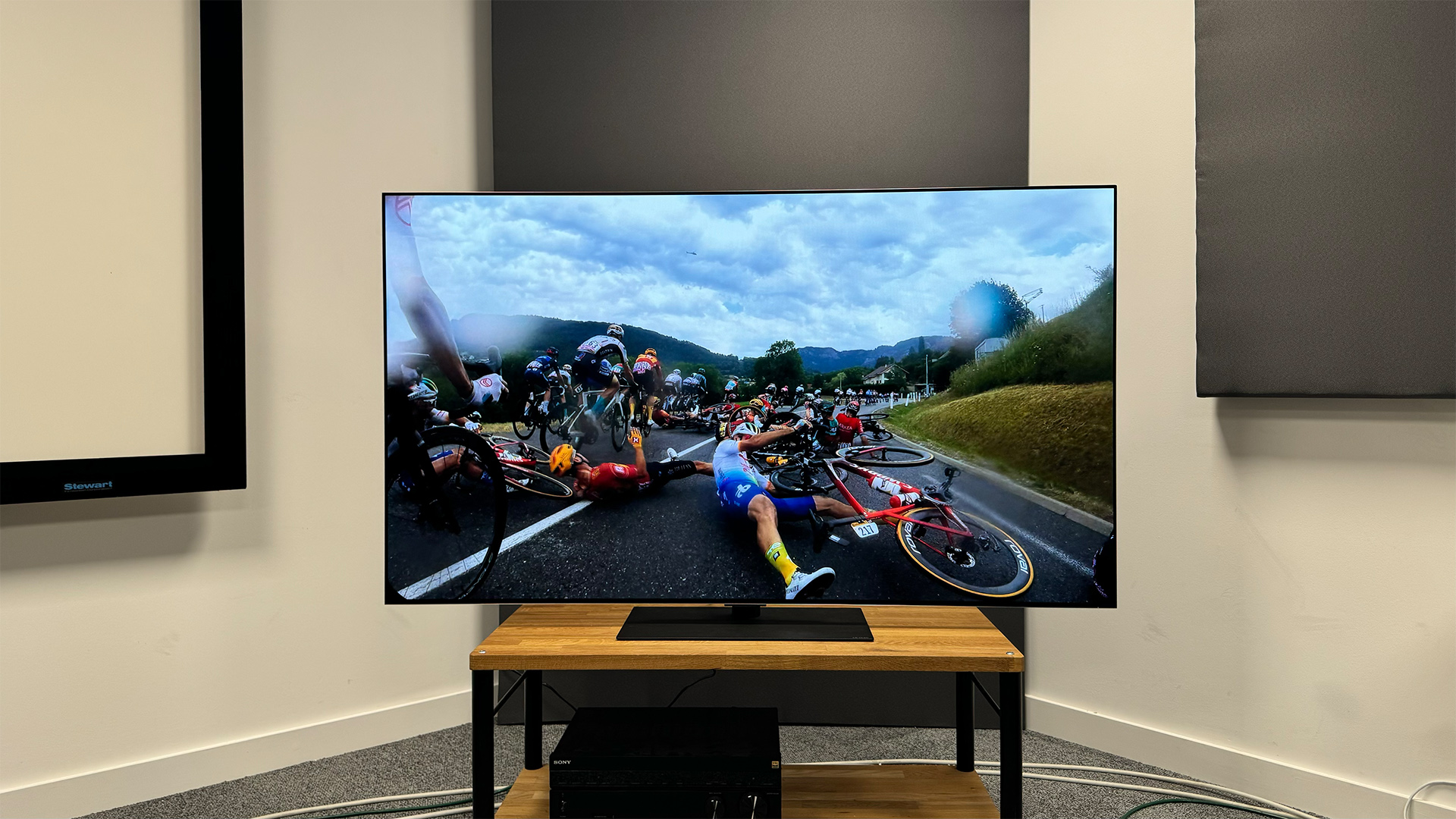
Screen size 65-inches (also available in 55-, 77-, 83- and 97-inches)
Type OLED
Backlight N/A
Resolution 4K
HDR formats HLG, HDR10, Dolby Vision
Operating system webOS 24
HDMI inputs x4 (4 x 48Gbps HDMI 2.1)
Gaming features 4K/120Hz, 4K/144Hz, VRR, ALLM, Dolby Vision game mode, HGiG
ARC/eARC eARC
Optical output? Yes
Dimensions (hwd, without stand) 145 x 84 x 5.7cm
The stand mechanism works well, with it being easy to install using a few included screws. It also has a pleasingly small footprint and two height options. The second, tall one gives it easily enough space to fit a large soundbar, such as the Sonos Arc, underneath.
The only issue we have is that the stand wobbles even when assembled properly, especially on the high setting.
The team also remains divided on the G4’s remote, which is unchanged from last year’s model. This means it’s a small, entirely plastic unit that feels significantly cheaper and less well made than the metal offerings you’ll find on competing flagship sets, including the Sony A95L, Panasonic Z95A and Philips OLED909.
We’d also have greatly appreciated motion sensitive backlighting, which we take as all but essential for serious movie fans who will generally watch films in the dark.
Features
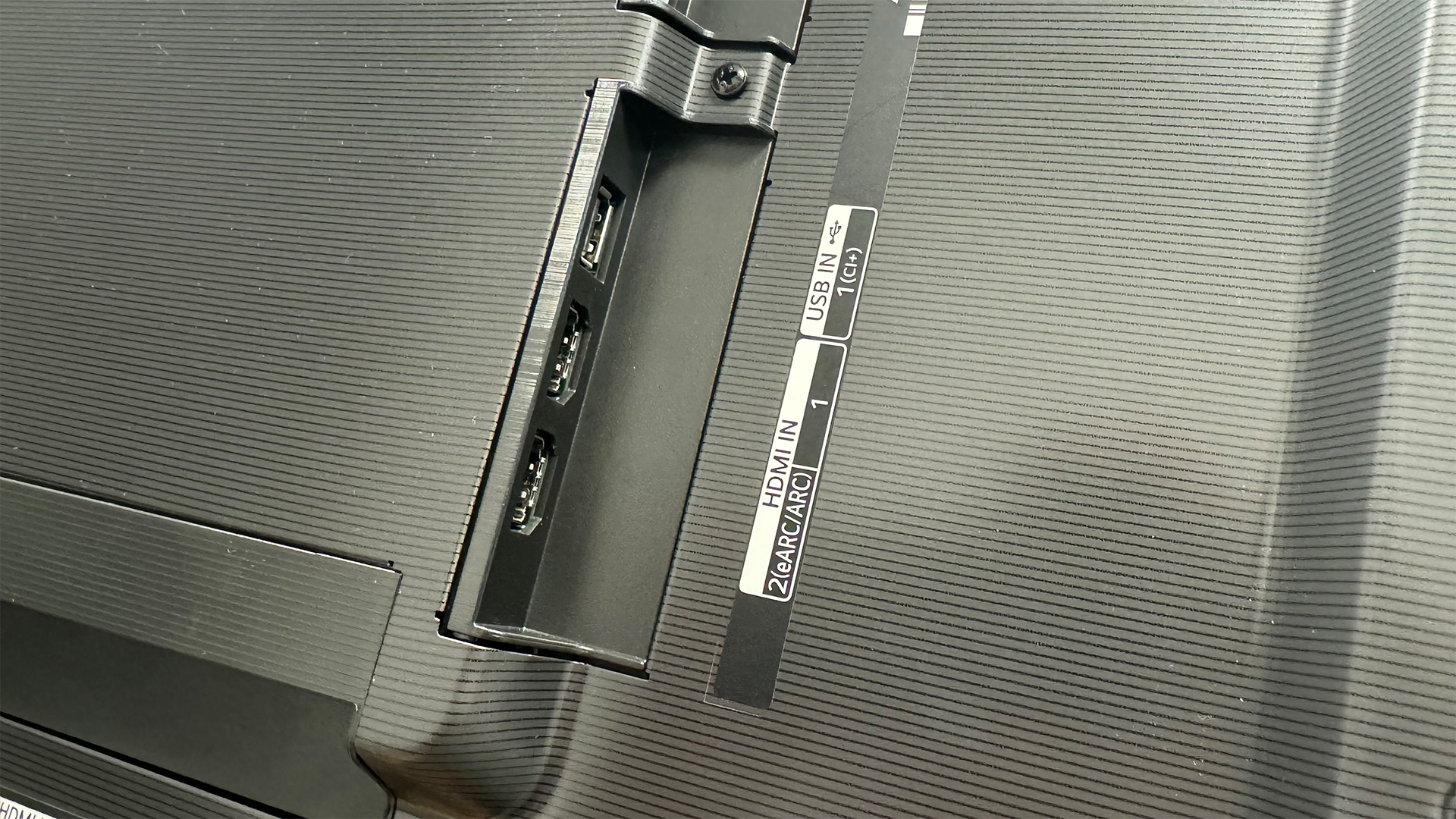
The LG G4 has had several major updates to its hardware and software, despite looking so similar to its predecessor. The biggest is the move to a second-generation MLA panel. The G4 is the first TV to pass through our test rooms with the upgrade, which is set to also appear on the Panasonic Z95A and Philips OLED909 later this year.
It aims to refine the experience MLA offers in a few key areas. The first is a push to make the panel go even brighter. LG Display, which produces the panel, states that second-generation MLA panels offer a maximum brightness of 3000 nits, which is around 1000 nits brighter than first-generation MLA OLED panels were theoretically capable of going.
This is impressive at first, but that is the absolute maximum, not necessarily what you will get from a finished TV in real-world conditions. That’s why many TV makers now differentiate between 'max' and operating peak brightness when discussing nit counts.
This is also especially true when you consider the fact most modern movies aren’t mastered anywhere near a nit-count that high, so the source, especially when played in Filmmaker mode, will usually not approach anywhere near that figure.
The G4’s new use of a new Alpha 11 chip is another key upgrade distinguishing it from the step down LG C4, which, despite our letter to Santa last year, doesn’t have MLA and is powered by a slightly tweaked, older Alpha 9 processor.
The Alpha 11 brings a number of new features you won’t find on LG’s cheaper OLED, the most notable of which is the fact it has 'four times more AI processing power' of the Alpha 9.
This is used to power a number of cool sounding features, including the G4’s 'Peak Highlighter', 'AI Director Processing', 'Object Enhancing by Visual Perception' and 'AI Sound Pro'.
The names may not sound that riveting, but they aim to offer a holistic suite of benefits to home cinema fans.
Peak Highlighter uses the new chip’s smarts to intelligently boost the brightness of a small number of pixels to significantly higher levels than is normally possible. LG claims the feature can push three per cent of the screen’s pixels to 150 per cent brighter than what’s possible on non-Evo OLEDs. Though the maths behind that statement is slightly confusing, the general idea is to create much more dynamic and impressive looking localised highlights in the picture.
AI Director Processing is the latest in a long wave of features aiming to help the TV offer more accurate, 'as the director intended' colours. This has been an area where Panasonic has traditionally led the way, but in which Sony has been intruding in recent years, most notably with its award-winning A80L and A95L OLED sets.
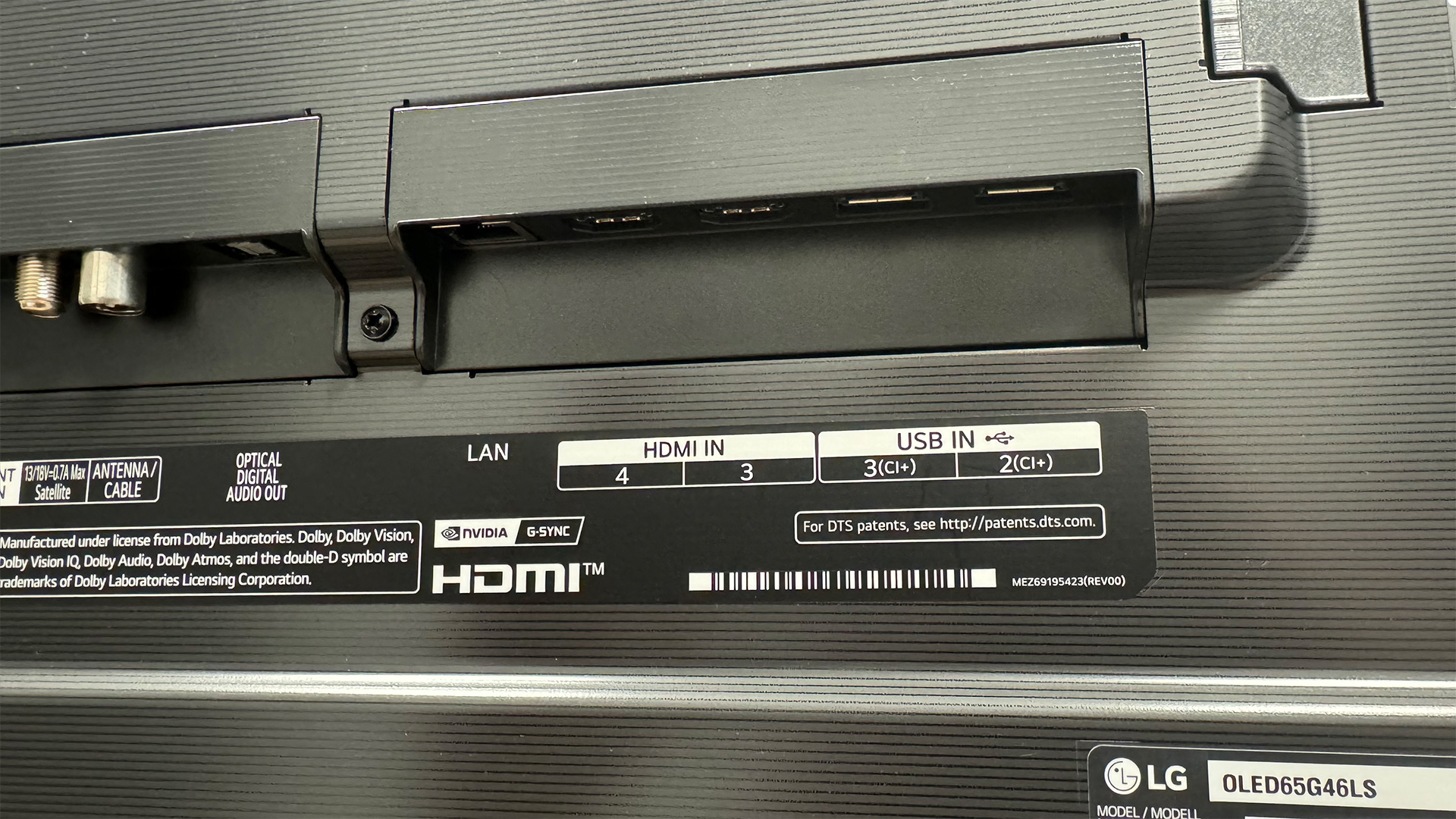
Object Enhancing by Visual Perception, meanwhile, uses AI smarts to try and give the picture a better sense of depth and three-dimensionality, while AI Sound Pro aims to let it offer a 'richer and fuller’ virtual 11.1.2 surround sound experience.
HDR support remains good, albeit not all-encompassing. The set supports HDR10, HLG (Hybrid Log-Gamma), Dolby Vision and Dolby Vision IQ with Precision Detail technology. However, like past LG sets HDR10+ / HDR10+ Adaptive are not included.
For gamers, like most modern C- and G-series OLEDs, the G4 has four HDMI 2.1 ports with support for ALLM and VRR. However, the new LG TV has support for 4K/144Hz, which means it can theoretically play games from top end PCs faster than its predecessor, which tapped out at 4K/120Hz.
The frequency refers to how many images per second a TV can display an image, so a higher number makes games feel smoother and can help on reaction-based titles when coupled with a low input lag. The PS5 and Xbox Series X are only capable of running at 120Hz, however, so 144Hz is only currently a bonus for PC gamers with very powerful rigs.
Like past G-series sets in the past few years, the G4 has Dolby Vision gaming support. The combined package makes it one of the best all-round gaming TVs from a features perspective, despite the fact 144Hz isn’t a huge upgrade for people already on a C2 or G2 set, or above.
This is especially true given the fact that, outside of those made by Samsung, most rival sets still only have two HDMI 2.1 connections, one of which doubles as the eARC port. If you only have one console you want to connect then two connections is fine. But be warned, it can lead to a lot of cable swapping if you have an Atmos audio system and want both a PS5 and Xbox Series X connected at the same time.
App support is excellent. The G4’s webOS 24 features support for all the major streaming services including Netflix, Disney Plus, Amazon Prime Video and Apple TV as well as more niche and local options such as Now, iPlayer and All 4 in the UK, as well as more specialist platforms including CrunchyRoll and Shudder.
This is great, but our testers are less enamoured with some of the changes LG has made to the operating system’s user interface with its latest webOS version. Some are useful, such as reducing the size of its Quick Cards (folders) and making them dynamic, so it's faster and easier to access the last service you used. But we're still not fans of the ads embedded in the UI.
Being fair to LG, the ads aren’t as obnoxious as that you’ll get on Amazon FireOS, which powers the retail giant’s own line of Fire TVs, but it does feel like a waste of space and an unnecessary intrusion on your home viewing experience.
Picture
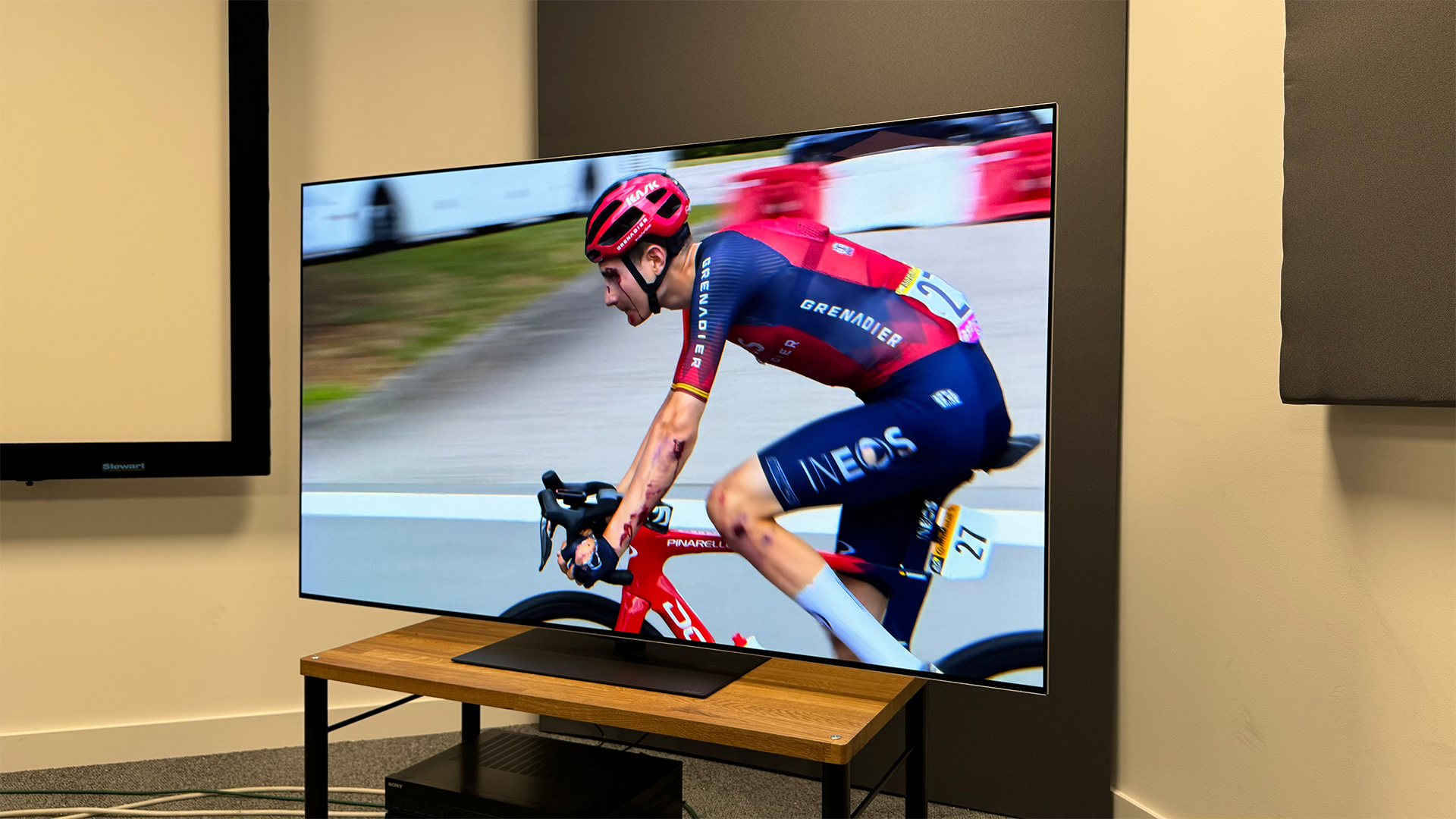
The main question we ask whenever we review a TV is 'how good is its picture?' The answer here is very good indeed. During our testing, the G4 offers noticeable improvements on last year’s G3 in pretty much every, once we’ve tweaked its settings.
This year, like Samsung, Sony, Panasonic, TCL, Hisense, Philips and pretty much any TV brand you can think of, LG is going big in its efforts to use AI to boost picture quality.
Out of the box, the AI powered processing is a little extreme, with colours looking overcooked and movements having a slightly artificial quality – which is the case with many of the TVs we test, OLED and otherwise. But scaling back the active settings, we notice LG has improved the TV’s processing to the point we actually keep some of the active processing switched on.
The Cinematic Movement option is a good example. We see the benefit of this running our regular Top Gun: Maverick test disc. Cinematic Movement is the lightest-touch option in the TV’s TrueMotion settings – it aims to artificially insert frames into what’s playing in a bid to make the picture look smoother. Traditionally we’ve not loved settings doing this as they can make motions look a little robotic and introduce artefacts, which occur when the TV wrongly guesses what 'should' be added.
The reason companies keep adding the feature despite this is that, when done correctly, it can aid picture quality. Any movie mastered at 24fps, which most are, can suffer from judder during rapid camera movements, as only 24 images per second are being shown, so the gap between each is more obvious.
Running Top Gun: Maverick on the G4 we find the Cinematic Movement setting – which just targets movies in 24fps specifically – takes a wonderfully light but effective touch. Movements as Maverick speeds across the desert landscape on his bike look wonderfully realistic, with not even a hint of the dreaded soap opera effect or artefacts creeping in.
The same can’t be said for the Samsung S95D we run it against. Running the same scene with its motion smoothing at its lowest settings, some artefacts creep in around Maverick's bike, making it look less realistic.
We enjoy similar results switching to BladeRunner 2049. The classic fight in the first scene holds wonderful heft, with each characters’ movements feeling suitably brutal and authentic. The same is true in the second scene where a car flies over the dark, sprawling cityscape. The scene holds wonderful levels of detail and is completely free of artefacts, making for a great home cinema experience.
The benefits of MLA are also obvious, with the city’s neon lights sparkling through the smog-filled streets and skyline, creating a truly immersive viewing experience with heaps of contrast. The added contrast gives the picture a wonderful three-dimensional feel, with characters looking suitably separate and removed from the background, while objects hold a wonderful sense of depth. The only set we’ve experienced that matches the G4 on this metric is the Sony A95L.
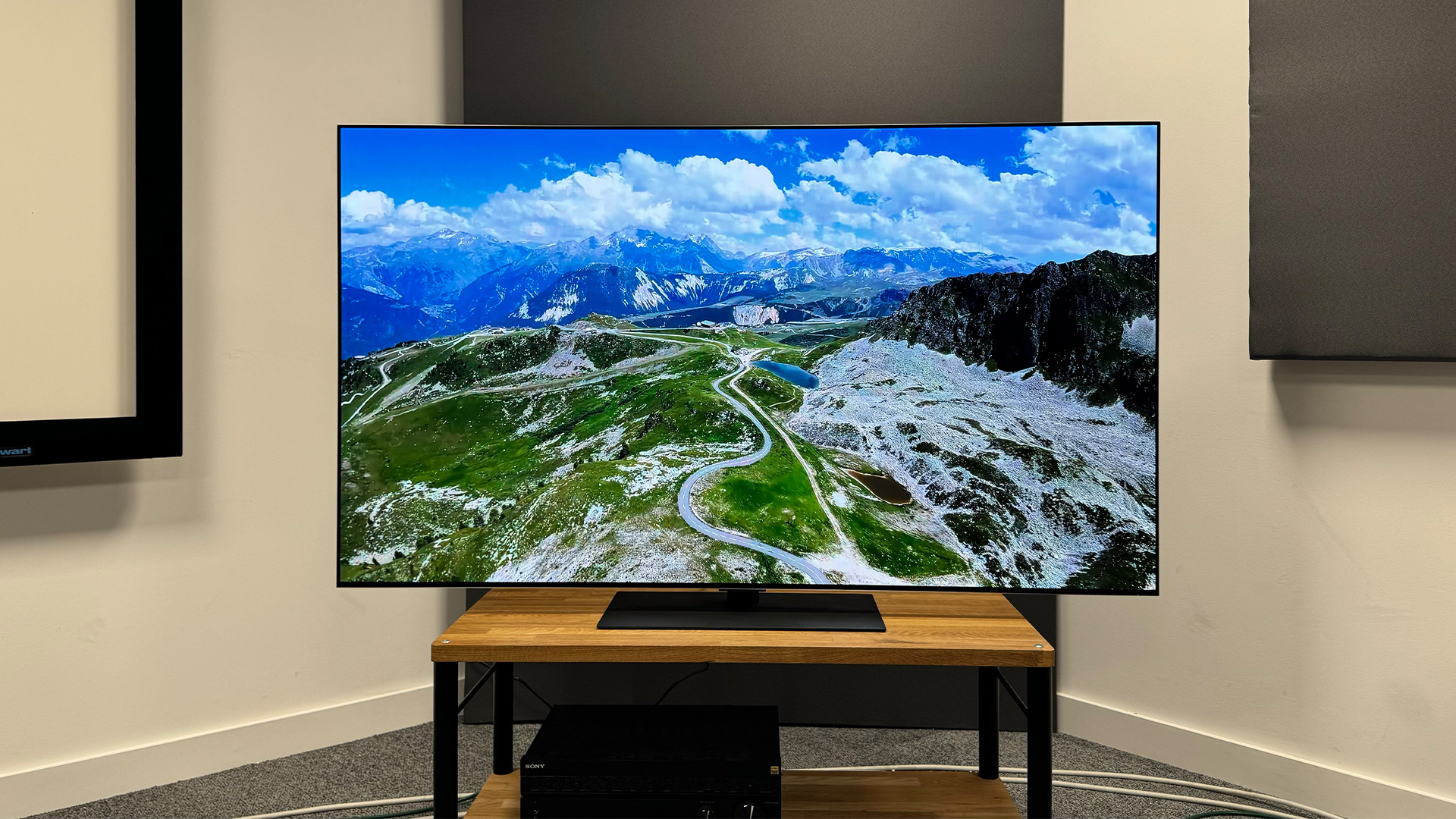
We also find that LG has clearly done some work attempting to fix one of our biggest problems with the G3 – a lack of vibrancy in low light scenes. On the G3 we found the Filmmaker setting made colours in dark scenes look slightly pale and dull, with it losing some of the contrast that made it so great in bright scenes – which is where MLA sets really shine.
This isn’t the case on the G4. During the incredibly dark and moody opening scene of Blade Runner 2049, in which K enters a dilapidated house, the G4 retains its stellar colour reproduction, especially in skin tones. During this scene, Dave Bautista’s skin holds wonderful levels of detail and the set delivers a vibrant hue of colours. Skin tones have a realistic feeling and level of warmth as a result, especially compared to the S95D, which leans more towards the cool, blue end of the spectrum.
Moving on to Pan, a terrible movie that’s still useful as a test disc due to its atypical 4000 nits mastering, HDR and peak brightness performance is excellent. During a particularly bright scene where a flying pirate ship soars through the sky towards a distant sunset, the picture holds incredible amounts of detail. The sun’s peak is also significantly brighter than past models, shining in the distance in a way non-MLA sets, including the LG C4 and Sony A80L, simply can’t match.
The only minor oddity we notice is that there isn’t quite as wide a hue of colours in certain parts of the picture as that which we experienced on the S95D, despite the G4 generally offering marginally higher peak whites. Like most QD-OLEDs, the Samsung has a wider range of reds and oranges on display in the area immediately around the sun, which is likely down to its wider colour gamut. This is only noticeable on very bright HDR content, however.
With Mad Max: Fury Road, an incredibly bright movie full of sandy faces and over the top colourful designs, results are equally impressive. Whether it's the flames exploding from a raider’s guitar or the sun rising over the wasteland, colours look vibrant without being overbaked, and even the brightest sections of the picture are full of detail.
Moving on to SDR performance, playing a Blu-Ray of True Grit, which is a famously difficult movie due to its incredibly dark scenes and generally old-timey grainy quality, the G4 once again impresses. Dark scenes retain solid amounts of detail and are free of the black crush we experience on many sets running this test. The film also retains its 'as the director intended' grain which, coupled with the warm but accurate colours, makes for a genuinely enthralling viewing experience.
All in all, this is simply a great TV to watch movies on.
Sound
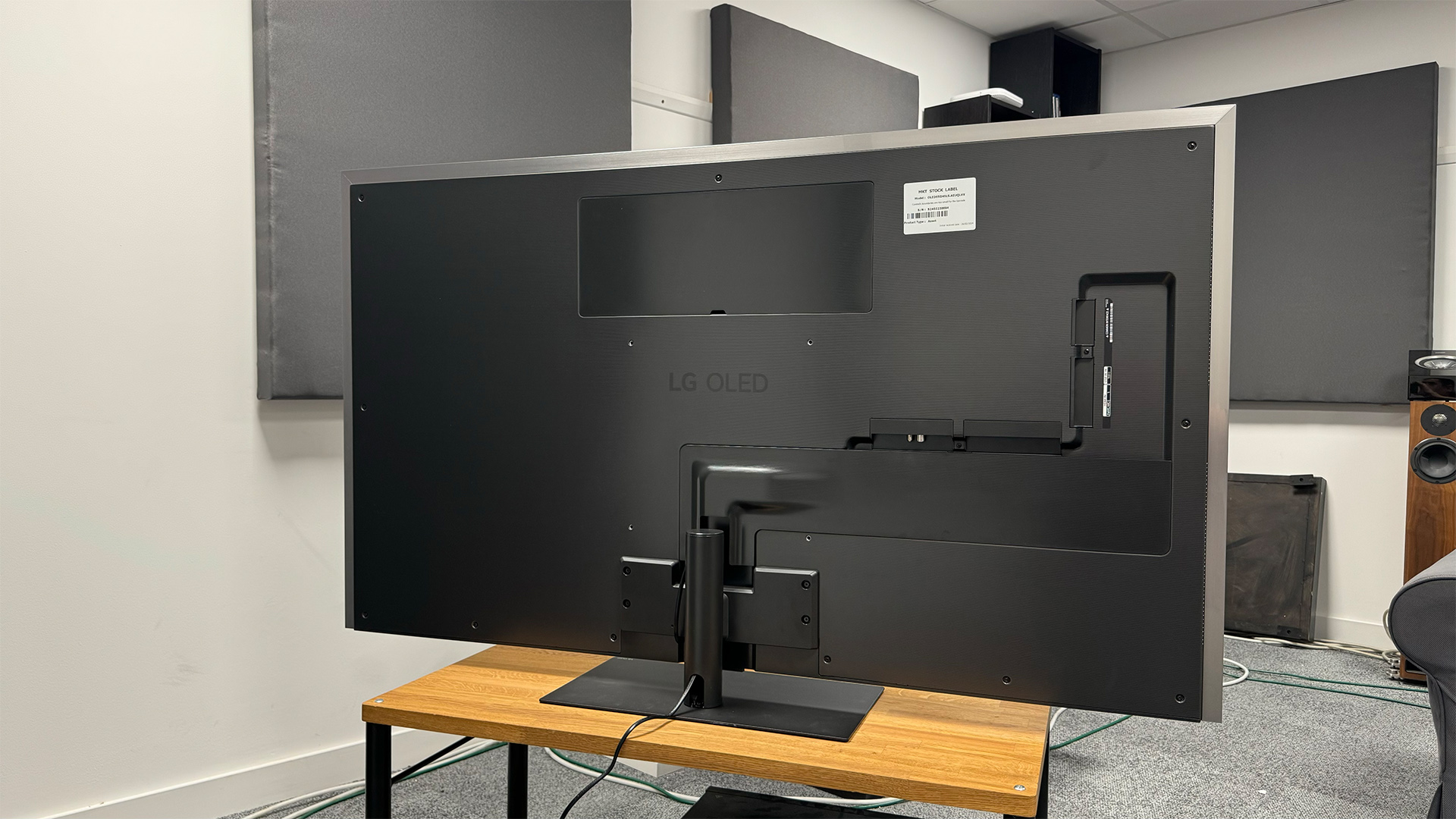
LG TVs have traditionally struggled to deliver the sonic goods in our test rooms. Since the first generation G and C-series OLEDs appeared we have constantly flagged poor audio performance, even by TV standards, as an issue on LG TVs in particular.
Out of the box, the TV’s Standard sound setting is undeniably flat and thin, to the point it’s only passable for very casual TV viewing. But, switching to the AI Sound Pro mode there are some immediate benefits.
Playing the third scene of Blade Runner 2049, which features disembodied voices moving around an apartment, the results are night and day better than that which we experienced on the G3. Each character’s dialogue has a nice directional quality, and separation from the scene’s background noise. This gives the audio noticeably more clarity and makes it much easier to get enthralled in the conversations.
Playing the second scene of the same movie, which is one of our standard stress tests due to its booming bass sections, there are also some clear steps forward. Unlike the G3 which attempts to mask its poor bass by pushing it to the forefront at the expense of the rest of the frequency range, the G4 has a more controlled approach. This means there is some precision to its bass, with the stabbing beats holding a distinct place over the soundtrack’s warbling synths.
All is not perfect however, and the G4 is still a far cry from the best sounding TV on the market. The sound is still undeniably thin, lacking the dynamism and heft you need to get a truly immersive home cinema experience. Watching Oppenheimer, the sound of the bomb blasts feels significantly weaker and less impactful than you’d find with even a moderately priced soundbar, such as the Sonos Beam (Gen 2). Higher parts of the frequency range are also handled badly and are prone to sibilance.
Strings in the Oppenheimer soundtrack have a nasally, acidic quality that makes it difficult to focus on the movie. The same is true when we power up the opening scene of Top Gun: Maverick. Here the speakers’ thin quality fails to do justice to Kenny Loggins’ iconic Danger Zone, which lacks the dynamics and power to get any of our testers’ blood pumping.
That’s why, despite good steps forward by LG, we still recommend investing in a separate sound system with the G4. Being fair to LG, this is advice we give on pretty much every TV we review, but it is particularly true here.
Verdict
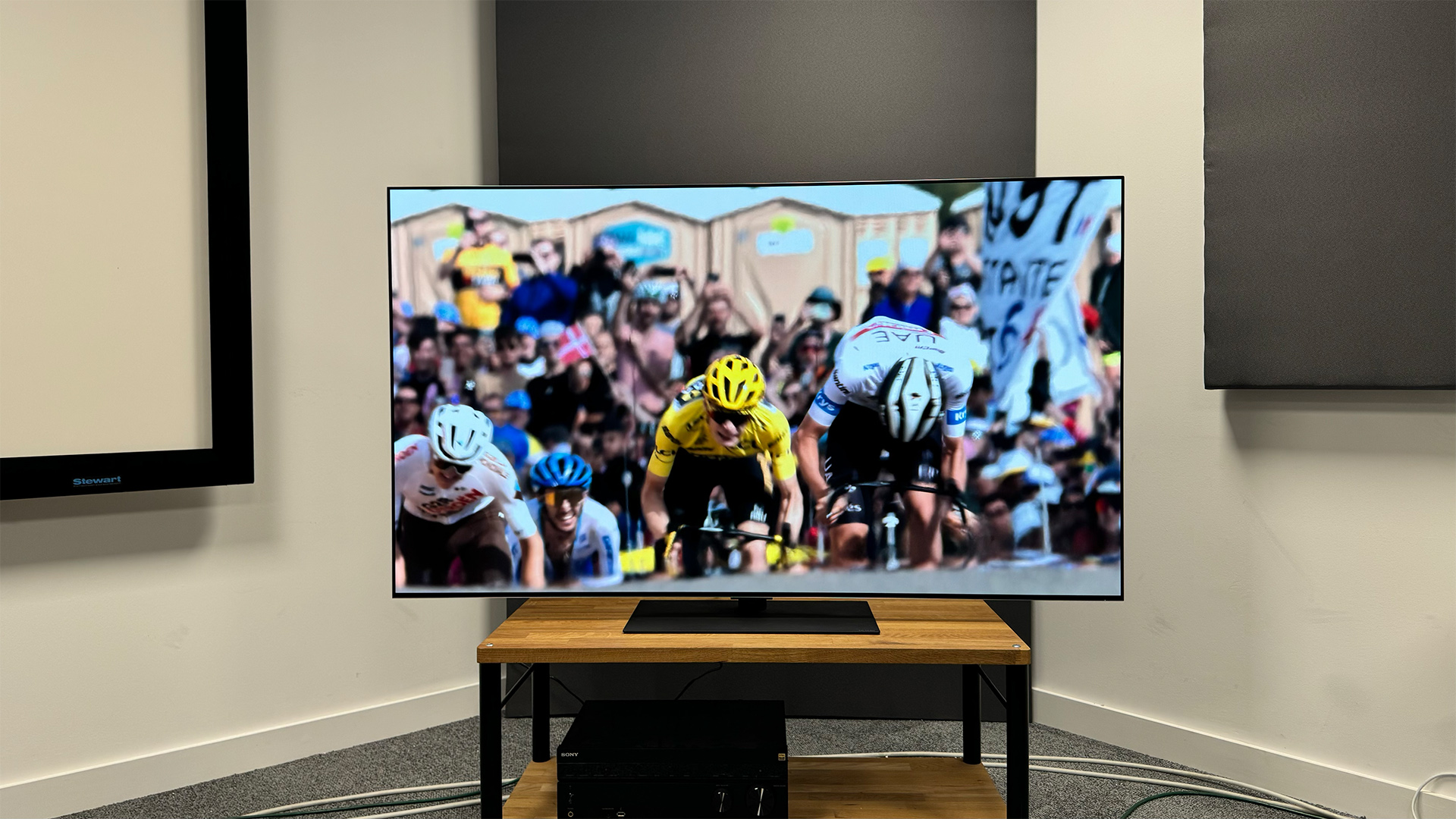
The G4 is a clear step forward for LG TVs. It doesn’t reinvent the wheel, but LG’s second generation MLA OLED tech improves on all the areas that made the first generation great. Highlights include stellar HDR performance, wonderfully immersive and accurate colours that are consistent from the brightest to darkest parts of the picture, and stellar motion handling. This plus its excellent suite of gaming features make it a fantastic option for any home cinema enthusiast yet to invest in a next generation OLED.
The only downside is that, despite a noble effort by LG, the G4 is still far from the best sounding TV on the market. Audio remains thin and higher frequencies are handled poorly, meaning a separate sound system will be an essential purchase alongside it, if you want a good, let alone the best, home cinema experience.
That said, given how common an issue this is with many of the TVs we test, it’s hardly a deal breaker, especially when the G4’s picture is so good. All-in-all if you want a fantastic flagship OLED TV, the G4 is well worth considering.
SCORES
- Picture 5
- Sound 3
- Features 5
MORE:
Check out our Panasonic MZ2000 review
Read our Philips OLED908 review
Looking for something different? These are the best OLED TVs we’ve reviewed

Alastair is What Hi-Fi?’s editor in chief. He has well over a decade’s experience as a journalist working in both B2C and B2B press. During this time he’s covered everything from the launch of the first Amazon Echo to government cyber security policy. Prior to joining What Hi-Fi? he served as Trusted Reviews’ editor-in-chief. Outside of tech, he has a Masters from King’s College London in Ethics and the Philosophy of Religion, is an enthusiastic, but untalented, guitar player and runs a webcomic in his spare time.
-
reginaldperrin Firstly… Picture = 5, Sound = 3, Features = 5. Total = 13. 13/3 = 4.33 out of 5. I must have been wrong about the rules of ‘rounding up’ all these years! Surely this is a 4/5 TV?Reply
Secondly… 144Hz? It’s pretty much universally agreed that - dependent on individual, of course - the human eye has the ability to process between 30-60 ‘images’ per second. Let’s not fuel the ‘numbers game’ if we don’t need to. ‘Smoother’, often interpolated, images in sequence doesn’t necessarily mean ‘better’. You’ll be telling me that a 96kHz audio file sounds better next, even though the human ear can’t hear above circa 20kHz. Oh, wait… #facepalm -
GSV Ethics Gradient Reply
I think sound matters least - many who have a decent sized screen will use at least a soundbar. A TV's sound would be of no importance to me whatever.reginaldperrin said:Firstly… Picture = 5, Sound = 3, Features = 5. Total = 13. 13/3 = 4.33 out of 5. I must have been wrong about the rules of ‘rounding up’ all these years! Surely this is a 4/5 TV? -
checkbuzz Reply
#facepalm indeed!reginaldperrin said:Firstly… Picture = 5, Sound = 3, Features = 5. Total = 13. 13/3 = 4.33 out of 5. I must have been wrong about the rules of ‘rounding up’ all these years! Surely this is a 4/5 TV?
Secondly… 144Hz? It’s pretty much universally agreed that - dependent on individual, of course - the human eye has the ability to process between 30-60 ‘images’ per second. Let’s not fuel the ‘numbers game’ if we don’t need to. ‘Smoother’, often interpolated, images in sequence doesn’t necessarily mean ‘better’. You’ll be telling me that a 96kHz audio file sounds better next, even though the human ear can’t hear above circa 20kHz. Oh, wait… #facepalm
Wow. There's a lot of misunderstanding and misinformation to unpack here.
High refresh rates (e.g 144Hz+) and therefore frame rates are critical in competitive gaming, the difference between 60Hz/fps and 144Hz/fps is like night and day. It has nothing to do with the human eyes ability to process images. My gaming computer monitor has a 240Hz refresh rate.
The article actually supports your opinion regarding interpolation not necessarily being a "better" solution, it's hardly a unique opinion. However the author is clearly making an exception in the case of the G4 (a first for What HiFi?) due to the outstanding performance of the new Alpha 11 processor. You did read the article yeah?
Also the sampling rate of digital audio (e.g. 96KHz) really has nothing to do with the upper frequency range of human hearing (circa 20KHz). These are two completely different things that just happen to both be measured in KHz.
In fact 96KHz is the modern industry standard digital sampling rate, widely used for the recording, mastering (and more recently streaming) of digital audio for music and cinema. On a high end audio system the subtle differences between CD quality audio (44.1KHz) and high definition audio (96KHz) are quite apparent. This all despite the fact that my aging ears upper frequency response is probably restricted to 16KHz these days at best.
A late reply I know but this TV is still the latest model from LG (I so want a G4!) and uninformed comments like this should not go unchallenged. -
checkbuzz Reply
Agreed. Literally no AV enthusiast who spends over £2000 on their TV uses the internal speakers. LG is well aware of this.Ethics Gradient said:I think sound matters least - many who have a decent sized screen will use at least a soundbar. A TV's sound would be of no importance to me whatever.
In an ideal world TV manufacturers would make high end models with optional audio processing, speaker and TV tuner systems, and even OS/app bloatware to save enthusiast consumers money.
Like most enthusiasts I use my TV exclusively as a monitor to view video signals from external sources. I don't really want to pay for OS features, hardware, software or functionality that I'm never ever going to use.
